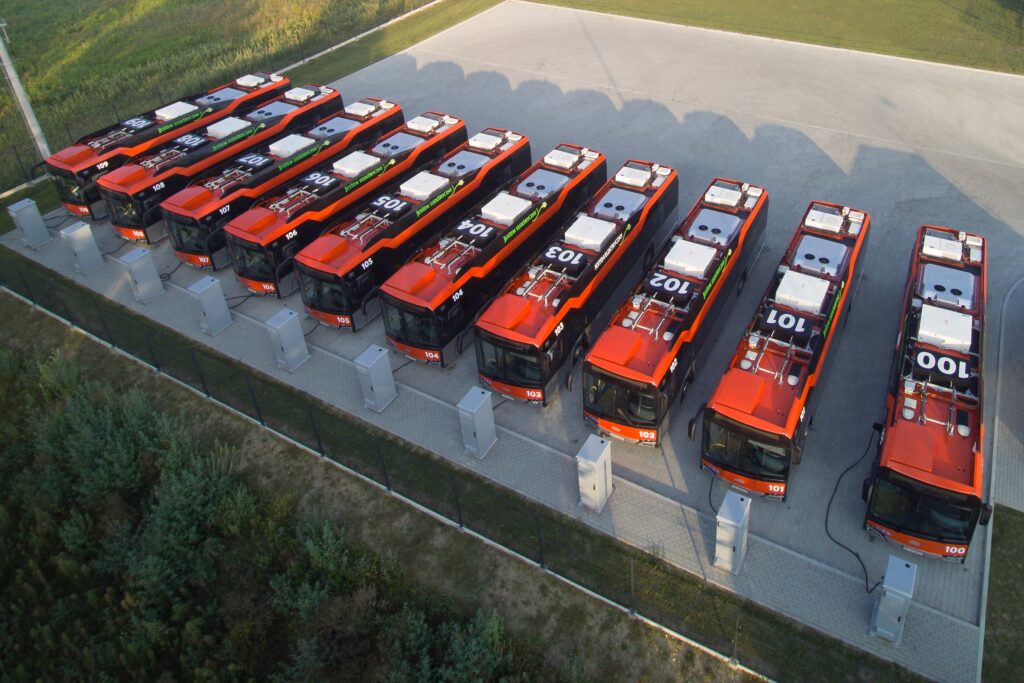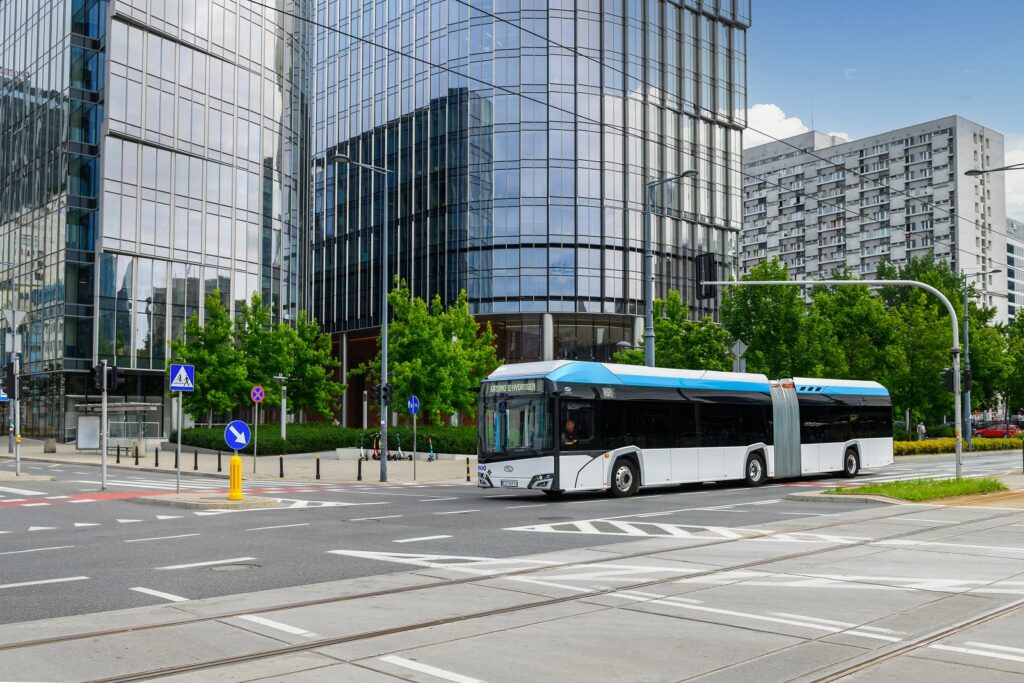In-motion charging (IMC)
In-motion charging (IMC) is another method of charging batteries in city buses. How exactly does it work?

A growing number of cities in Europe and around the world are introducing zero-emission buses into their urban transport systems. In the coming years, every operator and every city will face the challenge of a green transformation. The first question most often asked when deciding on a green fleet transformation is: which zero-emission solution to choose – hydrogen or batteries?
Battery electric models are far more popular today and are expected to remain so. Market forecasts suggest that hydrogen vehicles will account for around 15% of bus purchases, while batteries will power more than half of new vehicles.
HYDROGEN OR BATTERY – IT’S STILL ELECTRIC
First of all, it’s important to remember that both hydrogen and battery-powered vehicles are electric vehicles – the difference is in the source of the electricity.

Both are quiet and have zero emissions at the point of use. Battery vehicles use energy stored in batteries, which are recharged when they are depleted. Hydrogen buses, on the other hand, generate electricity on board, using a kind of small power station or fuel cell that needs hydrogen to operate.
So when to choose electric buses and when to choose hydrogen buses? The decision depends on a number of factors and considerations. These can be quite different in different cities.
INFRASTRUCTURE
While some cities already have electric vehicle charging infrastructure in place, others do not and have limited capacity, for example in terms of providing urban space for charging stations or providing sufficient power.

Some cities may not have a single hydrogen refuelling station nearby, while others may have access to industrially produced hydrogen – where the introduction of hydrogen technology into the transport system is worth considering.
If a particular location has a well-developed charging infrastructure, electric buses may be a more convenient solution. A well-developed charging network can allow electric buses to be charged quickly and conveniently en route, ensuring that the vehicles are highly operational and can be used extensively.
POWER GRID
Cities with an underdeveloped electricity grid may find it difficult to provide sufficient power for a large fleet of electric buses. In this case, hydrogen buses, which use hydrogen as a fuel and have their own power generation systems, may be a better option, providing efficient transport independent of the external power grid.
HOW MANY KILOMETRES CAN IT TRAVEL?
The range of a battery-powered bus depends on the type of the battery and the capacity – the higher the capacity, the more kilometres the bus can travel. However, the greater the battery capacity, the heavier the vehicle and the fewer passengers it can carry.

In these cases, hydrogen-powered buses can be a good alternative, as there is no such strong correlation between range and weight, as the compressed hydrogen has a much lower weight than batteries for the same amount of energy. Hydrogen buses can achieve ranges close to those of conventional vehicles on a single charge, giving operators flexibility and a wide range of options for using the vehicles on the road. These ranges are also achievable with battery vehicles, but require suitably large and therefore relatively heavy batteries to be fitted to the bus or several fast charging stations along the route to be built.
WHICH ONE TO CHOOSE?
Both solutions – battery and hydrogen – are quiet and emission-free at the point of use, produce no noise and make a real contribution to changing the urban environment for the better. So, hydrogen or batteries? Just as every city is different, there is no single answer to the challenges of green public transport, and each operator should weigh its own pros and cons. One thing is certain: all the ‘electric’ routes are the right ones.
In-motion charging (IMC) is another method of charging batteries in city buses. How exactly does it work?
NMC, LFP and LTO are types of batteries, with different chemistries. Learn how each battery types affects vehicle capabilities.
What components is a battery made of? What kind of cell chemistry can it have? What are the key functional parameters? Check it out!